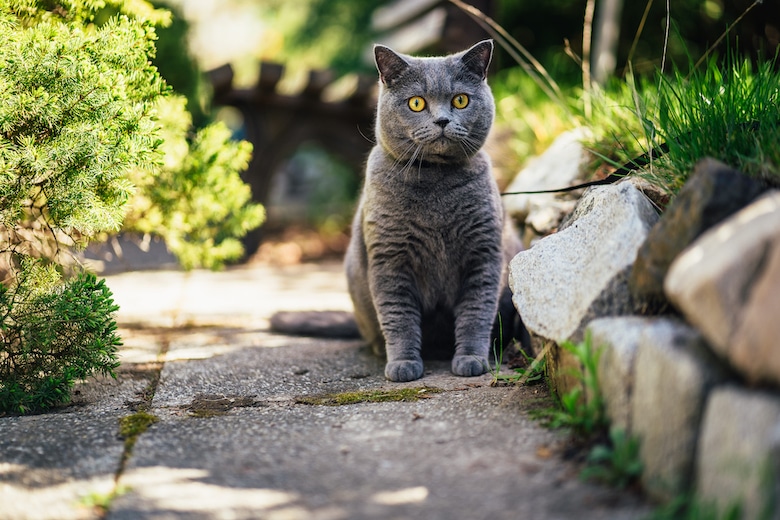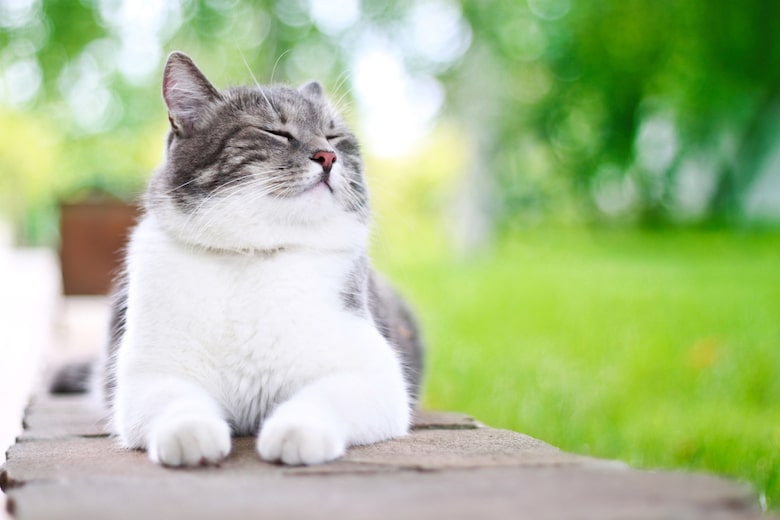In an ideal world, every cat would live indoors and enjoy a warm, loving home. Of course, we don’t live in an ideal world, and some cats must live outdoors due to circumstances beyond their or their person’s control. Here’s what you need to know about cats who live outside.
Only spayed or neutered cats should live outdoors. Cats should wear a breakable collar with ID and your contact information, but many cats are Houdinis when it comes to collar removal. Getting the cat microchipped is crucial. It serves as a critical backup in case he wanders off. You should also keep your cat current on all vaccinations and treat the animal regularly with parasite control products.
What cats are better suited outdoors
For some cats, living outdoors is the best option. Barn cats and other working felines provide rodent control or at least rodent intimidation. Feral cats may never adapt to living indoors. There are some housecats who cannot stand being inside, and make every effort possible – including tearing through screens – to get outdoors.
Then there are the cats for whom an outdoor life may prove the only option other than euthanasia. These are the animals with chronic inappropriate elimination issues that haven’t responded to medication and other therapies. Finding indoor homes for such cats is nearly impossible. Perhaps someone in your household has become severely allergic to Kitty. Rather than give the cat up, outdoor life may allow the animal to remain part of your family.

Photo: Danny Buehring/Getty Images
When outdoors is not feasible
Keeping a cat outdoors in a high-traffic area is not possible. The risks are simply too high. The same holds true if predators frequent the area, ranging from loose dogs to coyotes. Declawed cats are never candidates for outdoor life. Nor are cats with disabilities such as deafness.
However, if you live on a low-traffic street or far away from the road, in a relatively quiet location, keeping your cat outdoors may work well. Barn cats are often in demand in rural areas, and feral cats usually make the transition to barn cat quite easily.
Containment systems
Purchase containment systems at a pet store or online or DIY if you’re handy.
Related: 4 Ways To Safely Give Your Indoor Cat a Taste of the Outdoors
Gimme shelter
Provide a warm, safe place for your cat to sleep and protect himself from the elements. Maybe you have a garage, porch or shed to serve this purpose. If not, cats can do well in a homemade or premade shelter. Such shelters aren’t large, as a big shelter is not heat-efficient for one or two cats. Keep the doorway small enough so only a cat can get in. Hang a flap over the door to keep the wind and rain out.
Line the shelter with straw for bedding rather than towels or blankets. Straw is an absorbent bedding, while towels and blankets simply get wet in inclement weather. You can feed the cats inside the shelter to draw them in, or make it more appealing by sprinkling catnip within.
Protecting wildlife
Cats are natural-born killers. That’s not a judgment, simply a fact. Protect the wildlife on your property from your outdoor cat by placing a bell on the animal’s collar to warn birds and smaller animals of his presence. Of course, that’s not realistic if your pet is a working cat whose job is reducing the rodent population.
Top photograph: DeanDrobot/Getty Images
Read Next: 7 Tips for Making Your Outdoor Cat an Indoor Cat
